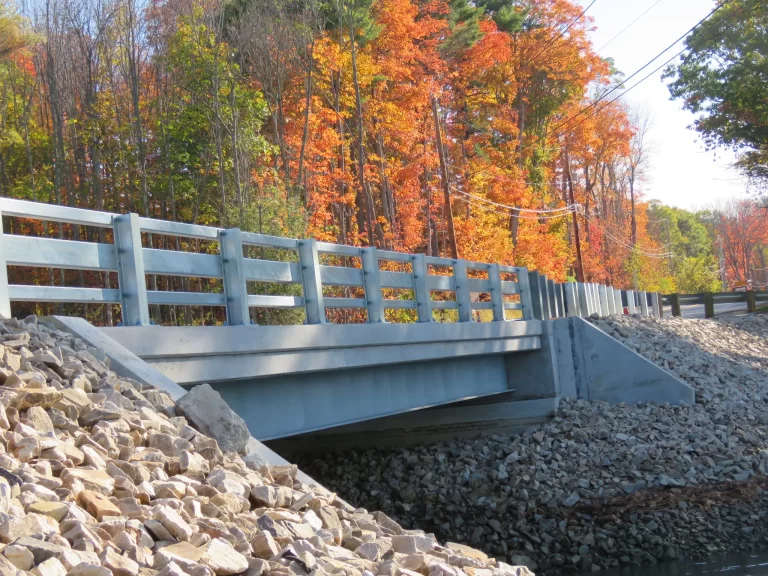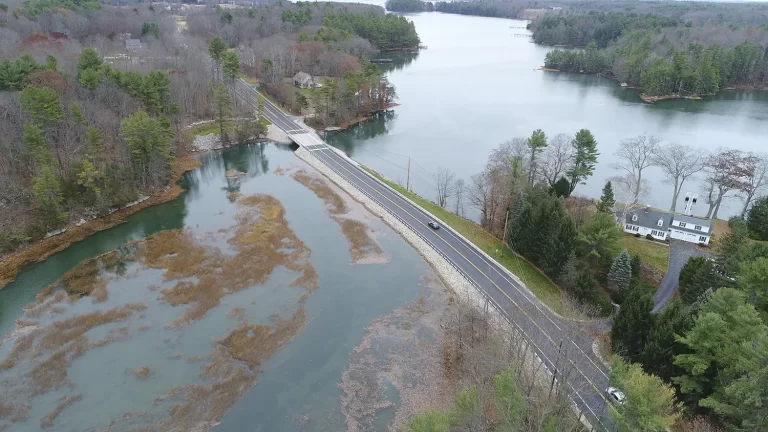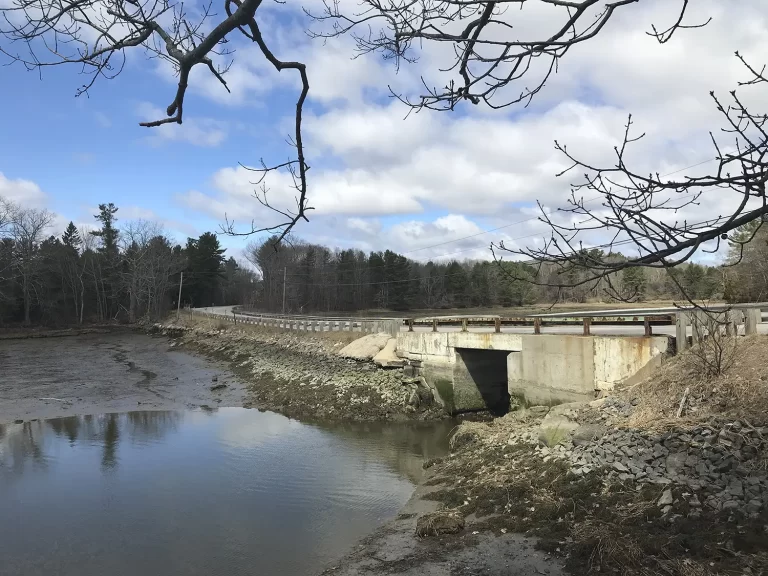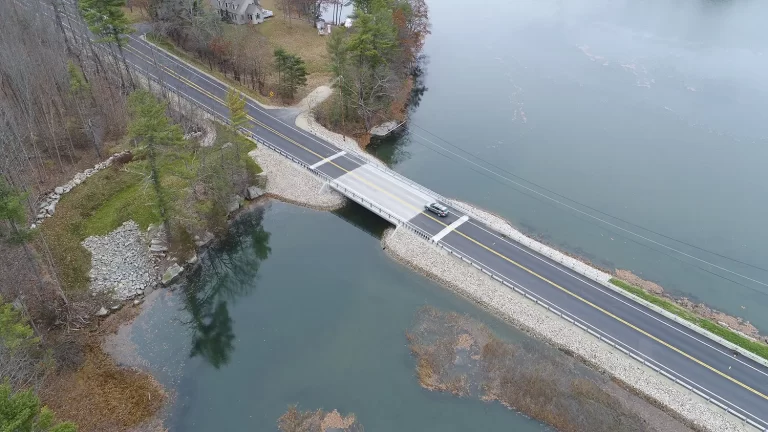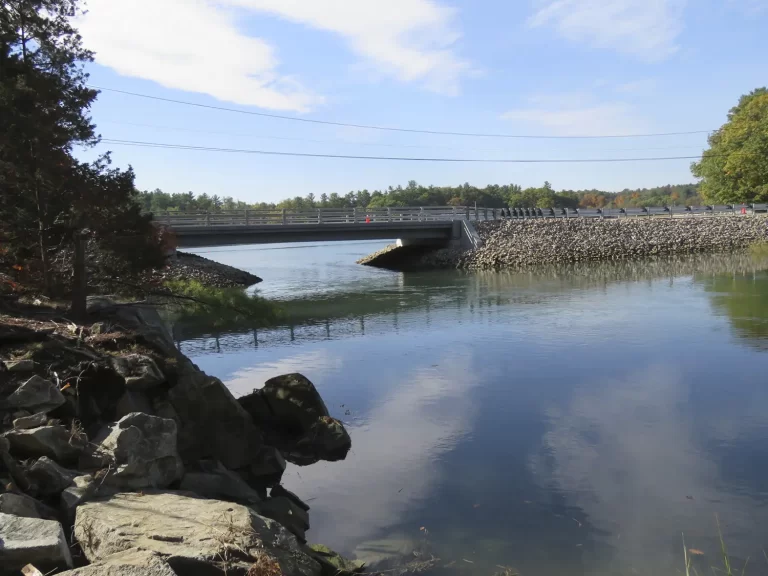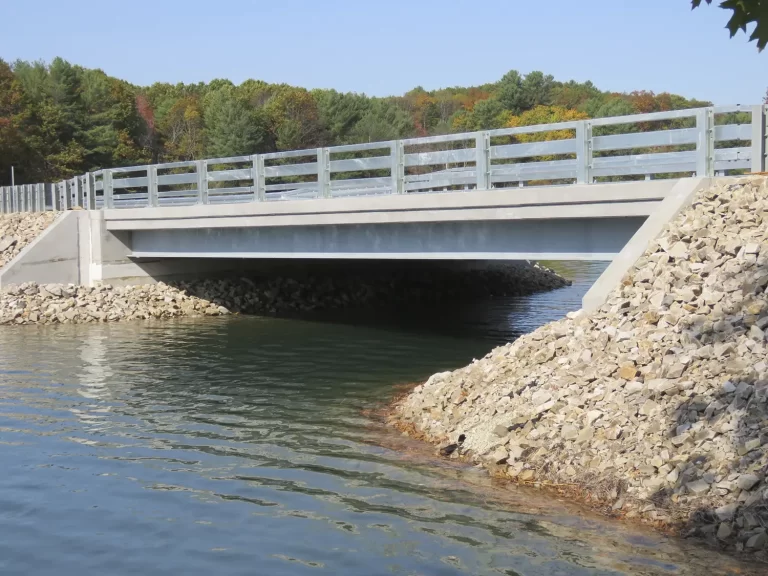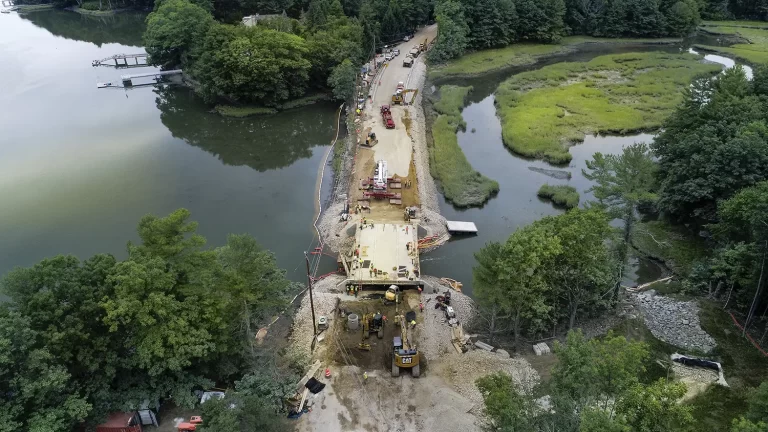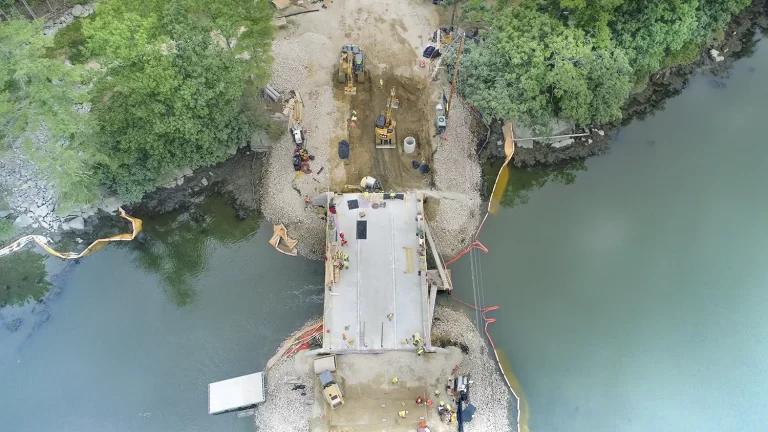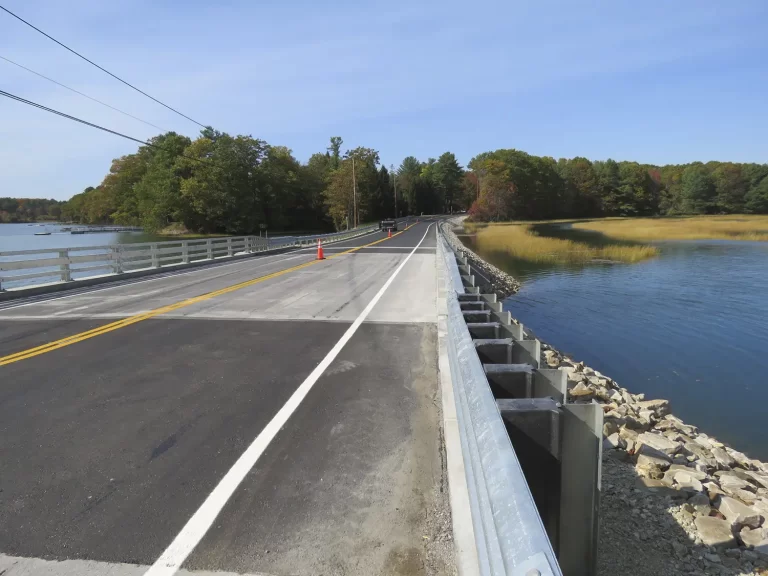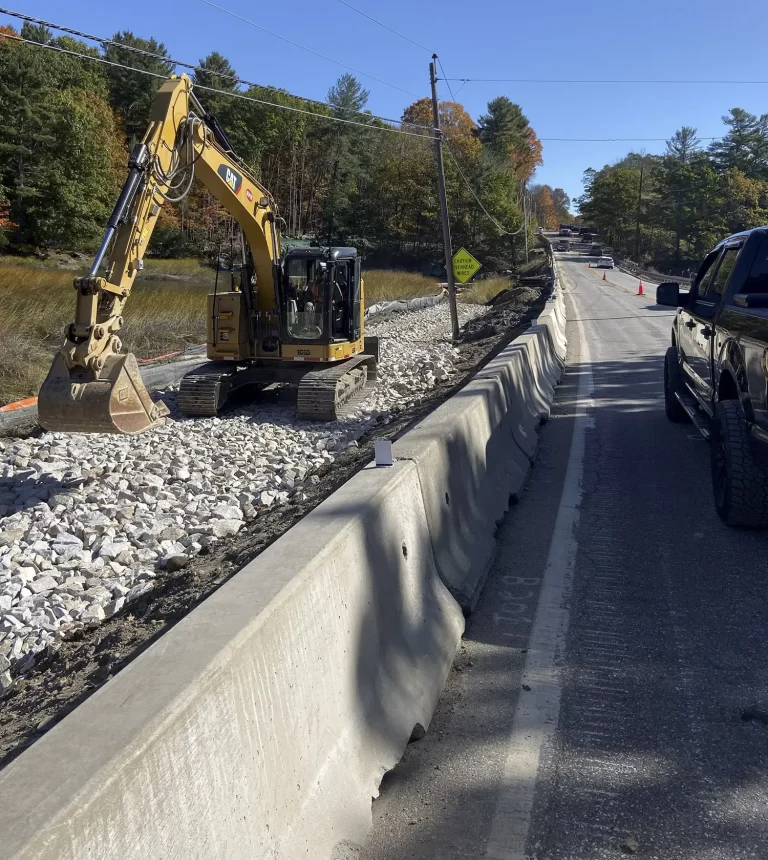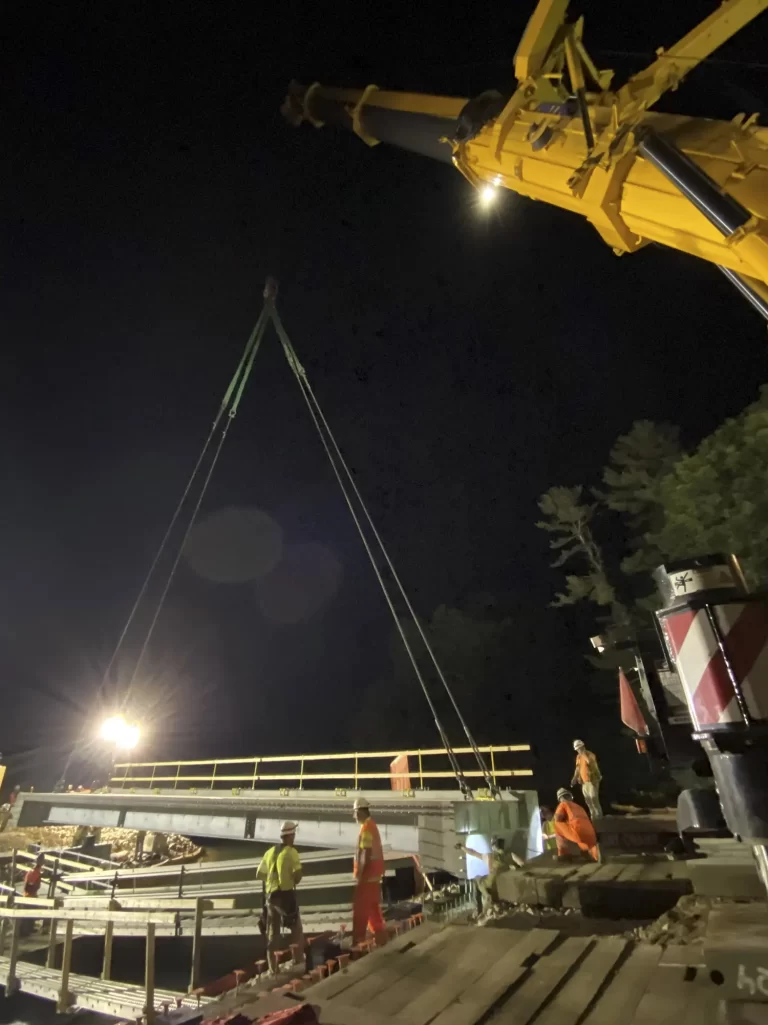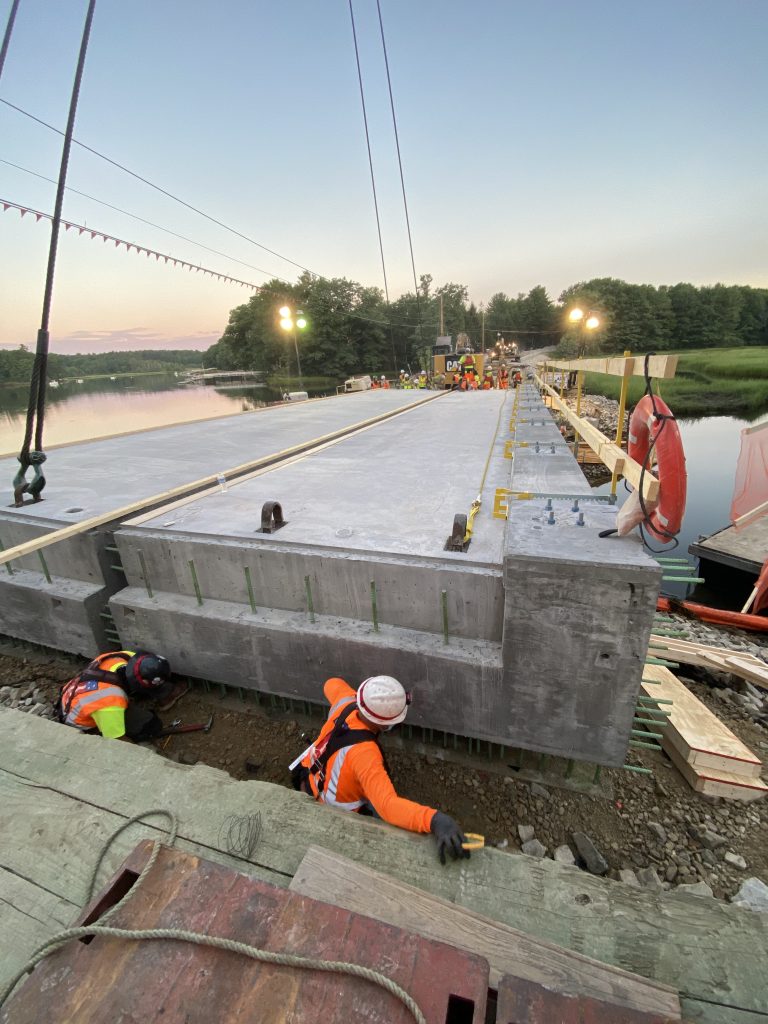US Route 4 over Bunker Creek Bridge Replacement
Project Overview
Project Overview:
The overall scope of the project was to replace the US Route 4 Bunker Creek Bridge and its approach through the Design-Build procurement method. The existing Bunker Creek Bridge was a 15-foot concrete slab bridge that carried US Route 4 over Bunker Creek as it flows into the Oyster River. The bridge was constructed in 1933 by creating a causeway out to the main flow section of the creek and has been in continuous service. Route 4 is a major east-west corridor in southern New Hampshire for commuters and the movement of goods via truck. The request for proposals allowed a 14-day shutdown of Route 4, with the Design-Build Team proposing a 5-day closure in the technical proposal, but actually reopening the roadway in 4 days. The replacement structure was widened to accommodate bicycles in a wide shoulder by providing 12-foot travel lanes and 5-foot shoulders in each direction rail to rail across the bridge and along the project roadway length.
Key Challenges Overcome:
Installing lightweight foamed glass aggregate in tidal waters – To install the lightweight aggregate for the slope widening, cellular slide rail trench boxes were used to excavate to a depth of 12’ below the mean high-water elevation. During each tide cycle the excavation followed the tide down to the bottom of excavation. Geotextile fabric was installed to wrap the lightweight aggregate before the tide rose. To prevent the fill from floating at the next high tide, the stone fill slope protection needed to be installed immediately.
Installation of micropiles and cast-in-place abutments within existing roadway under one-lane alternating traffic conditions – The Design-Build Team located the new abutments behind the existing structure to minimize any conflicts with the support of excavation (SOE) installation. A slide rail trench box was used for SOE for the new cast-in-place abutments. This enabled the micropile drill rig to work within the existing roadway and contain any drilling fluid within the SOE. Once the micropiles were installed the concrete work proceeded, all while one-lane traffic was maintained on the major east-west corridor.
Interesting Facts / Figures
- Approximately 5,000 cubic yards of lightweight foamed glass aggregate was used for the slope widenings.

